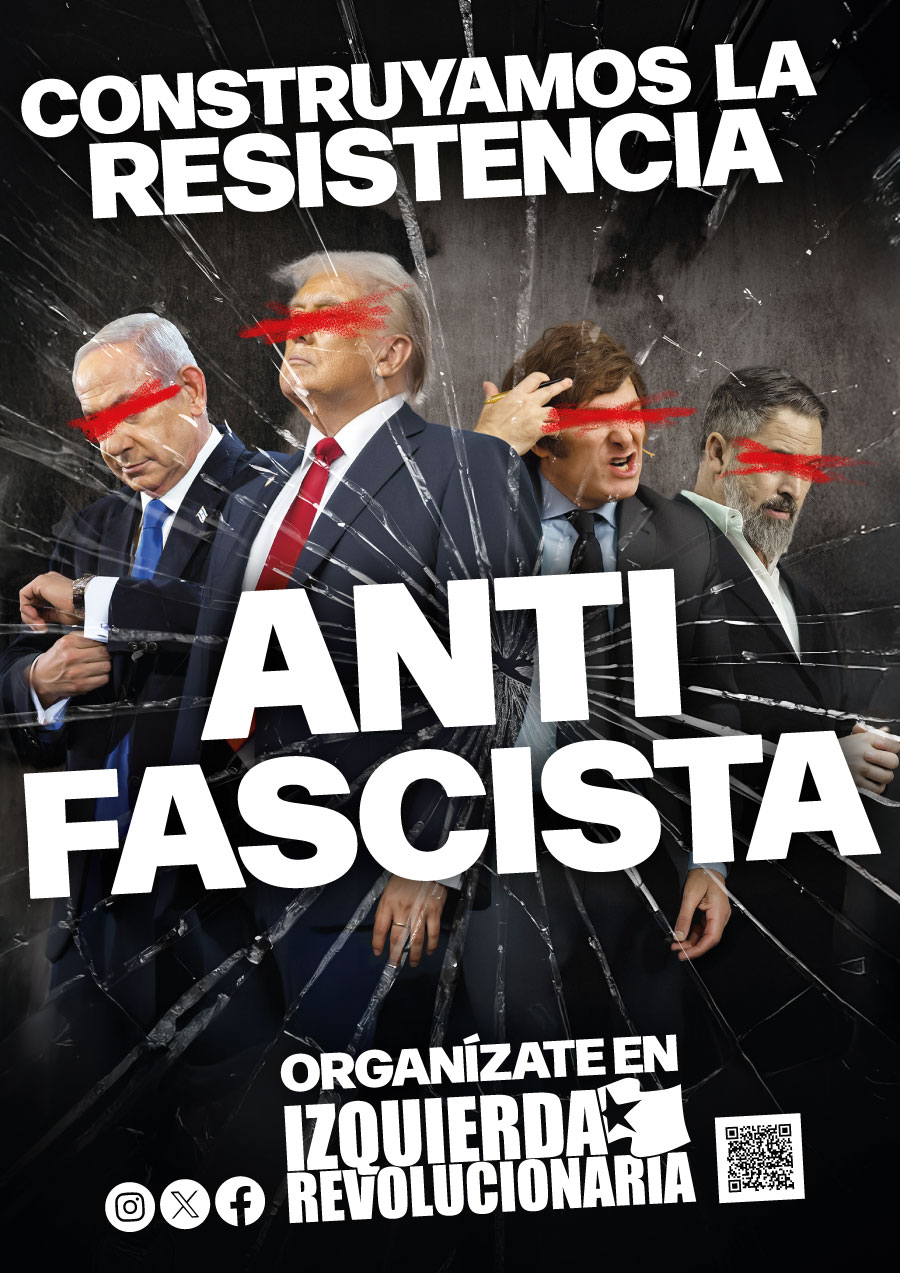Sri Lanka has been experiencing a popular rebellion since March 31. The Rajapaksa regime, cornered by the worst economic crisis since the island's independence in 1948, faces day after day massive demonstrations, general strikes and popular discontent that continues to radicalize.
The strength of millions in the streets saw Mahinda Rajapaksa announce his resignation as Prime Minister on May 9, three days after a massive general strike. The same one who a few weeks before refused to leave his position after his Cabinet's block resignation, has been forced to leave by the pressure from below. The rage against the regime that Mahinda represents is such that the former Sinhalese prime minister is currently taking refuge in the vicinity of the Trincomalee Naval Base, protected by the Army.
After the ferocious repression that has already left at least ten dead and more than 280 wounded by bullets, now the ruling class intends to put an end to this political crisis that has placed its system on the ropes. They are trying this with the help of parliamentary maneuvers. On the very day of his appointment as the new prime minister, Ranil Wickremesinghe —a member of the opposition and who has already held this position... five times since 1993!— announced his intentions for Parliament to discuss the 21st amendment to the Constitution and to launch a bill to “abolish the executive presidential system and replace it with a system that strengthens constitutional democracy.”
But, faced with a regime that is becoming more and more nervous and desperate, the response of the Sri Lankan people is clear: the fight continues until they all fall.
The first general strike in four decades
On April 28, more than a thousand unions, federations and worker platforms called the first general strike since 1980 to demand the resignation of President Gotabaya Rajapaksa. “I have never seen an appeal signed by unions of various beliefs and such a complete show of force for 42 years,” said one activist.

The strike was total in the transport sector, both public and private, in ports and railways, and in other key sectors such as energy, health, education and banks. That day marches were organized from different parts of the country to the president's office, in the capital Colombo, which has become the epicenter of the protests.
Reflecting the great success of the general strike, union leader Ravi Kumudesh announced a new hartal [1] for May 6 if Gotabaya refused to leave the presidential home.
And so it was. The Alliance of Railway Unions, the School Teachers and Principals Union, the Ceylon Bank Clerks Union, the Nurses Association and the Public Health Officers Union, the fishermen's and postal unions, the Progressive Clerks Association of the Board of Electricity, the Association of Train Conductors... and so on till adding up to two thousand organizations, which started up again. On May 6, at a higher level than 28-A, the island was paralyzed for another 24 hours and tens of thousands of workers, youth and peasants demonstrated with determination.
After the news that some members of the Rajapaksa clan were trying to leave the country, a significant part of the protesters occupied the airport. In practice, and as reported by local and national media, Sri Lanka is experiencing an indefinite general strike in many sectors.
“Open fire.” Repression fuels protest
The “Gota Go Home” movement has had to face dictatorial government repression and violence. Besides the declaration of a state of emergency a few hours after the first general strike, we have seen a curfew, the use of tear gas, of water cannons, and the order of the Minister of Defense to personnel from the army, the air force and the navy to “open fire and shoot at any person looting public property or causing damage.”
One of the bloodiest episodes was experienced on May 9. It had been a month since thousands of activists had peacefully occupied the Galle Face Green, in the center of the capital. Desperate, the government did not hesitate to send fascist groups to destroy the camp. Around a thousand extreme right-wingers armed with knives, swords and stones, protected by the police, began to attack those gathered there and to blow up tables, tents, etc. It is not the first time that the Sinhalese state has used these groups to try to frighten the population. The pogroms against the Tamil people in 1983 organized by the ruling elite at the time are a good example.

But what the regime did not expect was the immediate response after this episode. Not only did thousands of people return to the camp area to rebuild it and physically protect it from the provocateurs, but in just a few hours health, postal and port workers went on strike until those responsible were arrested and brought to justice.
This has hit the ruling family even harder and sends a very powerful message. It doesn't matter how many bullets the repressive forces fire or the terror that the capitalists try to impose, when the working class and the youth organize themselves and lose their fear, everything is possible.
An economy in default and the blackmail of the IMF
“The next few months will be the most difficult of our lives”, “there will be power cuts of 15 hours a day”, “we have a shortage of cooking gas, the supplies have not yet arrived”. These statements by the new prime minister help measuring the economic chaos [2] that Sri Lanka is experiencing.
The economy has collapsed. Foreign exchange reserves have crumbled and the budget deficit is 6.8 billion dollars (13% of its GDP). The currency has slumped and inflation —30% in the case of food— will increase to 40% in the coming weeks. The government announced last month that it would suspend payments on its foreign debt ($51 billion) in order to preserve cash for essential goods.
But the reality is that they cannot find cash even to pay for a boat of gas. The country has run out of this key fuel, and they have had to ask the population to stop queuing for a few days at gas stations while they resolve the situation.
The shortage of food, medicines and fuel is suffocating the population. Meanwhile, at a time marked by the war in Ukraine where the struggle for markets and control of strategic areas is intensifying, the various imperialist powers are rubbing their hands over the Sri Lankan default.
The prime minister has assured that the nation urgently needs 75 million dollars in foreign currency to pay for essential imports and is in negotiations with the International Monetary Fund. To please the body led by Kristalina Gueorguieva, Wickremesinghe has promised to privatize Sri Lankan Airlines. As part of this blackmail, the IMF has demanded that the government cut off its talks with China [3] in order to reach an agreement. A very different “aid” from what Ukraine is receiving, with the IMF calling for “subsidies and not loans” to be given to the Zelensky regime.
At the same time, India is seeing in this crisis a golden opportunity to regain political power in its neighboring country. India has never been a major lender to Sri Lanka —unlike China— but is now slowly emerging as one of the largest providers of aid [4] .
However, the meetings between all the agents involved in the debt restructuring will take longer. As Foreign Affairs magazine explains, “Sri Lankan bonds are held primarily by private creditors in the United States. China will want to ensure that any debt relief the IMF offers to Sri Lanka is not primarily used to pay off these bondholders [5].”
And while these vultures figure out how to make more profits and do even more business, those who are paying the price for their imperialist game are the oppressed masses of Sri Lanka.
Let the whole regime fall! For workers power
The revolutionary outbreak that the Asian island is experiencing is far from being suffocated. After the resignation of Mahinda Rajapaksa and the signs of weakness of the regime, the movement feels strong, and with good reason. More than 50 days of mass demonstrations, two general strikes, occupations of government buildings and key infrastructure in the country. And all this with the representative organizations of the left (JVP and the Maoist Ceylon Communist Party) absolutely disappeared! The potential that exists to bring down the president is tremendous, and could drop in the coming weeks.

The revolutionary effervescence that beats in Sri Lanka needs a strategy, organization and a conscious leadership. The masses cannot be permanently in the streets. For the movement to triumph, the spontaneous indefinite strike that exists in many sectors and cities needs to be extended throughout the productive system by the hundreds of existing unions, and committees need to be promoted in each factory, school and locality to defend a revolutionary solution to this crisis.
The only way to end the legacy of the rotten Rajapaksa regime —either being this family in power or another one equally corrupt— is to break with the capitalist system. The conditions to create a workers' government under the control of the working class, youth and peasants are present. A Government where the economy is at the service of the interests of the people, and the marvelous natural resources that the island has are used to satisfy the pressing social needs. A Government where ethnic and religious minorities can live together without sectarianism or divisions, ensuring the democratic and national rights of the Tamil people.
There is only one way to break with the barbarism of capitalism: revolution and socialism.
————————
[1] Term used in many Indian languages to designate strike.
[2] We recommend reading “Sri Lanka. Popular uprising against energy shortages and chronic poverty”.
https://www.izquierdarevolucionaria.net/index.php/internacional/asia/13126-sri-lanka-levantamiento-popular-contra-el-desabastecimiento-energetico-y-la-pobreza-cronica
[3] The Asian giant and Sri Lanka were involved in negotiations on the restructuring of the debt; the island owes Beijing 6,500 million dollars. The rapprochement between the two countries has been evident and very rapid, especially with the infrastructure projects awarded to China, including the port of Hambantota and the Colombo-Galle highway.
[4] India has pledged to send $1.9 billion to Sri Lanka and lend an additional $1.5 billion for imports. At the same time, Delhi has also shipped 65,000 tons of fertilizer and 400,000 tons of fuel, with more fuel shipments expected by the end of May. In exchange, India has struck a deal allowing the Indian Oil Corporation to access the Trincomalee oil tank farm and develop a 100MW power plant near the area.
[5] Sri Lanka on the Brink. How the Pandemic and War in Ukraine Led to Economic Collapse
https://www.foreignaffairs.com/articles/sri-lanka/2022-04-14/sri-lanka-brink





















































